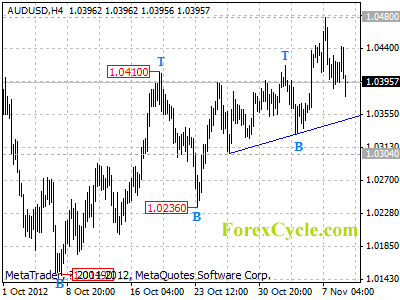By MoneyMorning.com.au
Nothing changed yesterday.
Barack Obama is still the president of the US. The Republicans are still in charge of the House of Representatives, which means there’s still lots of potential for squabbling and inaction.
Elsewhere, Europe is still in a mess. As for China, no one really knows what’s going on there, but there’s certainly a lot of potential for trouble.
Like I said, nothing changed yesterday.
So why did the Dow collapse in its worst plunge of the year?
The Market is Neurotic
One of the best characterisations of the stock market is still Benjamin Graham’s description of ‘Mr Market’. He’s always there to buy or sell you shares. But he’s a moody fellow. Some days he’ll pay whatever it takes; other days he’ll be desperate to offload whatever he’s got.
Lately, Mr Market seems to have an incredibly short attention span, too. He only seems able to focus on one thing at a time.
Prior to the US election, Mr Market was fretting over who would win. Mitt Romney would arguably have been more friendly to businesses in terms of tax policies.
But there was also a fear that he’d have been a ‘hard money’ kind of guy. For a market hooked on quantitative easing (QE), that was a worrying prospect.
Now Obama’s back in, the market doesn’t have to worry about QE suddenly being withdrawn. But nothing else has changed. So now the focus has shifted to all the other things left to worry about.
Hence the huge plunge in the US stock market yesterday. The Dow Jones index fell by more than 300 points. And – perhaps more worryingly, as it’s such a key stock – Apple has now entered a bear market. Its share price is down more than 20% from its peak.
So what exactly are investors fretting about now?
For starters, there’s that ‘fiscal cliff‘ problem everyone keeps talking about. In case you weren’t already aware, a package of tax hikes and spending cuts is due to take effect at the start of next year.
If the full package is put in place, it’ll suck a load of money out of the US economy. Chances are that would hit the economy hard.
Given that almost nothing has changed in the make-up of the American leadership, attempts to reach a compromise will boil down to how co-operative the two sides of the government feel.
I suspect some sort of deal will be reached. The Republicans can hardly accuse Obama of being a mad ‘tax and spend’ socialist at the next election if the changes are allowed to go ahead. And if the economy takes the hit now, chances are the pain will be in the past by the time 2016 comes around.
So at this stage, they’ve every incentive to reach a compromise. The closer to the next election they can push tough decisions on spending and tax-raising, the better it’ll look for them.
Of course, it’s anyone’s guess how it will all turn out. However, history suggests that ‘big scary events’ that everyone already knows about usually end up being less big and less scary than imagined.
Expect Europe to Return to the Headlines
Europe is more of a concern. If you think negotiating the fiscal cliff is a challenge, try doing the same thing across 17 different countries, all with different electoral cycles.
And yesterday European Central Bank head Mario Draghi warned that even Germany is starting to suffer as recession spreads across the region. In fact, the disappointing German economic data probably rattled investors more than anything to do with the US election.
We still believe the ECB will end up having to print money. It’s only a matter of time. But expect more ‘crisis’ headlines and summits before then.
As for China – it’s anyone’s guess what will happen when the handover of power is finished there. But with shadows hanging over both the US and European economies, it’s hard to believe that China can reignite economic growth easily when demand in the rest of the globe is so weak.
What can you do?
Well, as we’ve said on numerous occasions, the best way to deal with all this uncertainty is to try to ignore it. There’s always some potential disaster waiting in the wings. Hard as it may seem to believe sometimes, the world has endured far harder times and come through.
Ultimately, that was Ben Graham’s point when he talked about Mr Market. He’ll come to your door every day in one frame of mind or other. But you don’t have to trade with him unless you think it’s worth doing so.
Don’t let his mood swings affect your judgement. You don’t need to worry about his frame of mind – just look at the deals he’s offering you. If they’re good value, take them. If not, he’ll be back tomorrow with a different offer.
For investors, all that really matters is buying what’s cheap. Valuation is the key to successful investing.
John Stepek
Contributing Editor, Money Morning
Publisher’s Note: This article originally appeared in MoneyWeek
From the Archives…
More Bad News for the Asian Century
2-11-2012 – Kris Sayce
Is the Asian Century Already Kaput?
1-11-2012 – Kris Sayce
Has the Australian Dollar’s Luck Just Run Out?
31-10-2012 – Murray Dawes
How the Aussie Dollar is Caught Up in Big Bankers’ Games
30-10-2012 – Callum Newman
Does Excessive Government Spending Make You the World’s Best Treasurer?
29-10-2012 – Kris Sayce

So Much for the Obama Bounce

